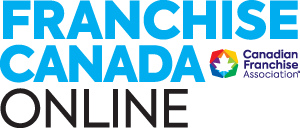A: When starting a new franchise venture, one of the main hurdles that a franchise owner may face is how to reach the point of making a profit. Although franchisees often get into a business model because they love the related industry, ultimately, they need to pay the bills.
Understanding timing of profitability is often personally important for the franchisee. However, it’s also critically important to the business plan that the franchisee also be able to demonstrate and articulate the path to profitability. A potential lender or investor will want to know that the franchisee has carefully considered the relevant costs and revenue levels required to make the business successful and whether the revenue levels are attainable, since franchisee success leads to successful loan repayments or investor returns.
Different individuals have different ideas about profitability. It’s important to distinguish between a business’ break-even point, having net income, or being cash flow positive since these terms all mean slightly different things. A break-even point is the point at which a company’s sales equal the costs of production and other fixed costs. Net income represents accounting income, which is loosely based on break-even calculations, but contain some non-cash elements such as depreciation. Being cash flow positive refers to an increasing cash level for the company over time.
So how can a franchisee determine when they can expect to reach profitability? It’s a combination of following some comprehensive steps and ensuring a base understanding of key financial concepts.
One of the first steps is to work out what the start-up or purchase costs will be. These may include the initial franchise fees paid to the franchisor, costs related to the buildout of a location—including equipment, furniture, and fixtures—and costs to get the underlying franchise company up and running, such as legal, accounting, or consulting costs. Other initial outlays such as inventory, employee training, and deposits for rent or utilities must also be considered in start-up costs.
Once a business is started, there’s often a period where the revenue experiences growth. The break-even point is reached when the revenue earned in a business covers all ongoing costs. To determine the break-even point, the franchisee needs to consider fixed costs, variable costs, and related revenues.
Fixed costs, also called indirect costs or overhead costs, are those costs that don’t change depending on the volume of revenues. It’s important to understand your fixed costs since high fixed costs require a high level of revenue, whereas lower fixed costs allow a business to continue to operate even in periods of low revenue. Fixed costs may include items such as property taxes, most utilities, or loan interest. Rent is often a fixed cost but in some franchise systems, rent has a variable component based on sales volumes.
Variable costs are those costs that change with the revenue volumes. Since they can fluctuate based on revenue levels, having a solid understanding of your variable costs is critical to helping you make good projections and determining when you’ll reach profitability. Examples of variable costs include advertising fund fees and royalties, wages, utilities, and consumables such as raw materials or packaging.
It’s important for a franchisee that hasn’t yet broken even to understand what proportion of each dollar of revenue is covering variable costs. As long as variable costs are less than the related revenue, additional sales will result in the business being closer to profitability. In contrast, if variable costs exceed the related revenue, either big changes are required to the business model, or the business won’t be viable.
The final step is actually calculating the break-even point. This can be accomplished by dividing fixed costs over the percentage of revenue that remains after variable costs. The result is the actual volume of revenue required to cover all fixed and variable costs.
This is where the hard work for the franchisee begins. They must determine if they can achieve the break-even revenue because if they can’t, they need to determine if either fixed, variable, or both costs can be adjusted to be in line with anticipated revenue levels.
Buying a new franchise can have its benefits and challenges. However, franchisees can successfully navigate many of the challenges through proper planning, particularly around financial needs and projections of the business. Understanding the finances of the franchise may not be why franchisees chose to operate their business, but laying a solid groundwork can pay off down the line.
Lyn Little
Partner
BDO Canada LLP
LLittle@bdo.ca


